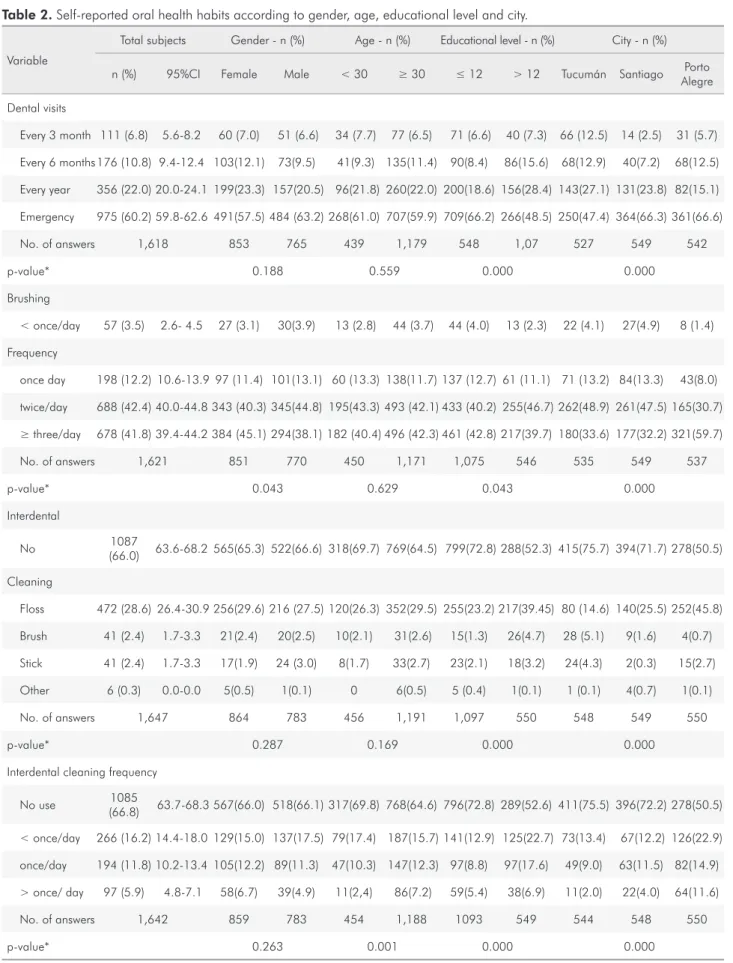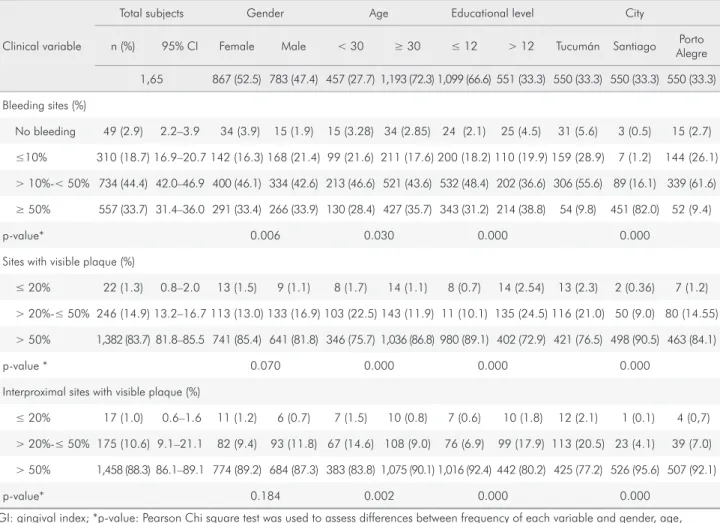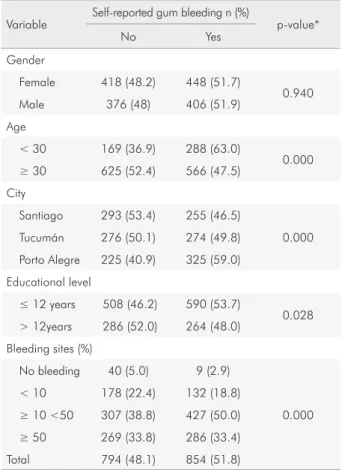A multicenter study of oral health behavior among adult subjects from three South American cities
Texto
Imagem




Documentos relacionados
Data collection tool was a structured questionnaire with 21 closed questions with multiple choices and three open ques- tions about professionals characteristics (category, time of
The questionnaire was composed of both closed and open-ended questions. The irst few questions were inten- ded to characterize the pharmaceutical establishment and consisted of
Objetivou-se, no presente trabalho, avaliar a metodologia de separação por cluster levando em consideração o desempenho de grupos de propriedades rurais em relação às BPAs no
The following variables were selected for the study: biological (gender, age); socio-behavioral and demographic (sexual behavior, marital status, level of education, city
The principal objective of our study was to develop a self- administered questionnaire of oral health and oral hygiene habits for patients undergoing general anaesthesia and vali-
Both questionnaires objectively addressed questions related to oral health (knowledge of oral alterations during pregnancy; influence of oral diseases during pregnancy); level
A semi-structured questionnaire was used to characterize the sociodemographic, health, and weight training profiles of the sample, which consisted of questions related to
(1) the right to the city and distinct urban agendas – Healthy Cities, Sustainable Cities, Smart Cities and Educational Cities – and their interconnections with the right to